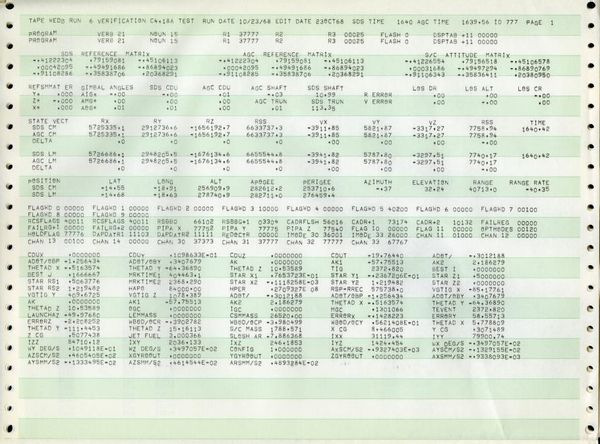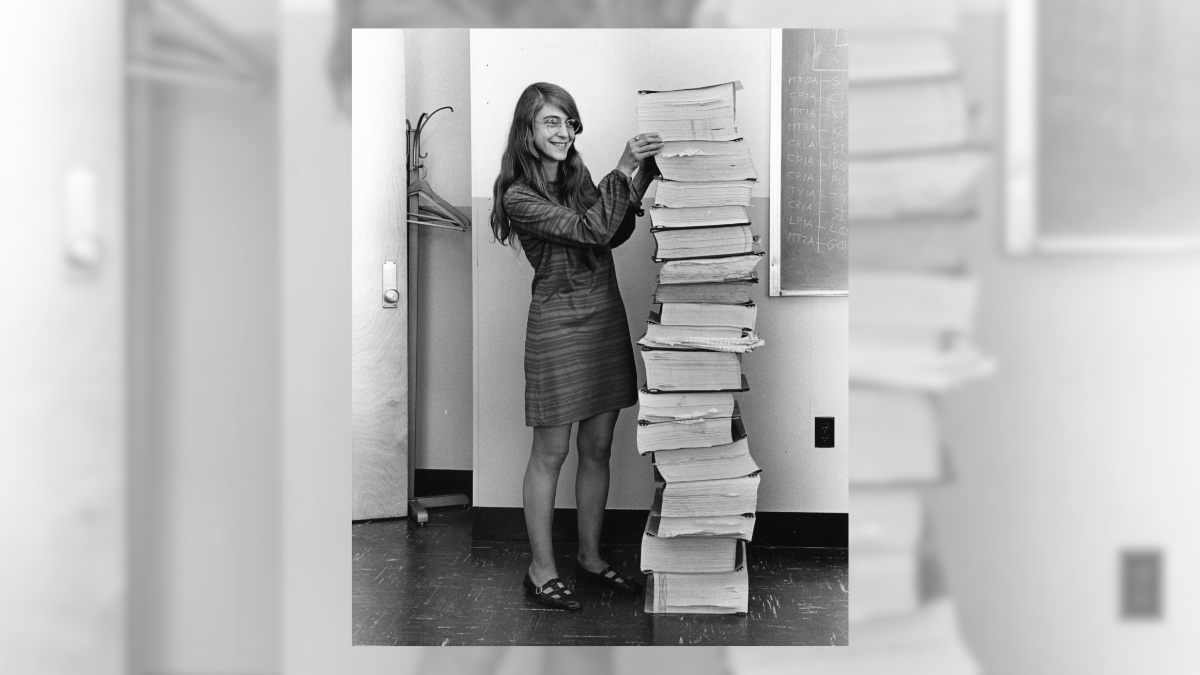A black-and-white photograph that shows a woman with long, brown hair standing beside a pile of papers stacked higher than she is tall has circulated in corners of the internet with claims suggesting that the dress-clad woman is none other than software engineer and Presidential Medal of Freedom Award-winner Margaret Hamilton. The stack of papers, it’s often said, contains programming code hand-written by Hamilton that was responsible for the success of NASA's Apollo lunar landing missions.
Iterations of the claim have appeared across social media since at least 2015, including posts shared to Facebook, Reddit, Instagram, Imgur, and X:
Margaret Hamilton stands next to code she wrote by hand to help land Apollo 11 on the moon in 1969: pic.twitter.com/bhPcWPrSiw
— Jon Erlichman (@JonErlichman) August 14, 2022
Snopes determined through a Google Lens reverse image search that this claim is true: The above photograph is published by a number of legitimate news sources and public domain sites, including an appearance on the NASA and Smithsonian American Women’s History Museum websites.
A computer scientist who led the Software Engineering Division of the MIT Instrumentation Lab, Hamilton played a critical role in developing flight software for NASA’s Apollo program, reported a 2016 MIT blog that described the history of the iconic 1969 photo. According to the blog, Hamilton said that the image was “taken at MIT in 1969 by a staff photographer for the Instrumentation Laboratory… for use in promotion of the lab’s work on the Apollo project.” The original caption, she says, reads:
Here, Margaret is shown standing beside listings of the software developed by her and the team she was in charge of, the LM [lunar module] and CM [command module] on-board flight software team.
After receiving a degree in mathematics from Earlham College in Indiana, Hamilton joined the MIT Instrumentation Lab as it was working alongside NASA for the Apollo 11 mission. Nicknamed the "Rope Mother," Hamilton pioneered her way through a male-dominated field. At the time, the preferred way to store digits was by "magnetizing tiny, donut-shaped pieces of material called cores," wrote the Smithsonian Air and Space Museum. These cores were threaded with a series of wires whose unique formation communicated code used in software development. Such "core rope" was often woven by women, according to the museum:
Weaving the rope was a tedious process. The programs were developed on a large computer located at the MIT Lab, then translated into a code and punched on to perforated tape. This was then fed into a machine that positioned the cores for proper threading. Most of the employees who threaded the ropes were women, chosen for their manual dexterity. It is not hard to see that getting the programs right was a high priority. Once the ropes were woven it was very difficult and time-consuming to identify and fix an error. It is ironic to call these programs software, since making a change was as difficult, if not harder, than modifying a hardware circuit.
Hamilton's role as Rope Mother meant that she was in charge of documenting every line of code "with a full explanation of what it did and how its actions affected the rest of the program." This ultimately constituted the coding used in Apollo 11 software that ensured the successful operation of the Lunar Module.
On July 20, 1969, astronauts Neil Armstrong ad Edwin Aldrin Jr. became the first humans to walk on the moon as part of NASA’s Apollo 11 mission.
In 2009, Hamilton recalled the project and her contributions to software used during the Apollo mission. The stacks of code shown in the photo were digitized and made publicly available in their entirety by the code-sharing website Github.
 (National Air and Space Museum)
(National Air and Space Museum)

